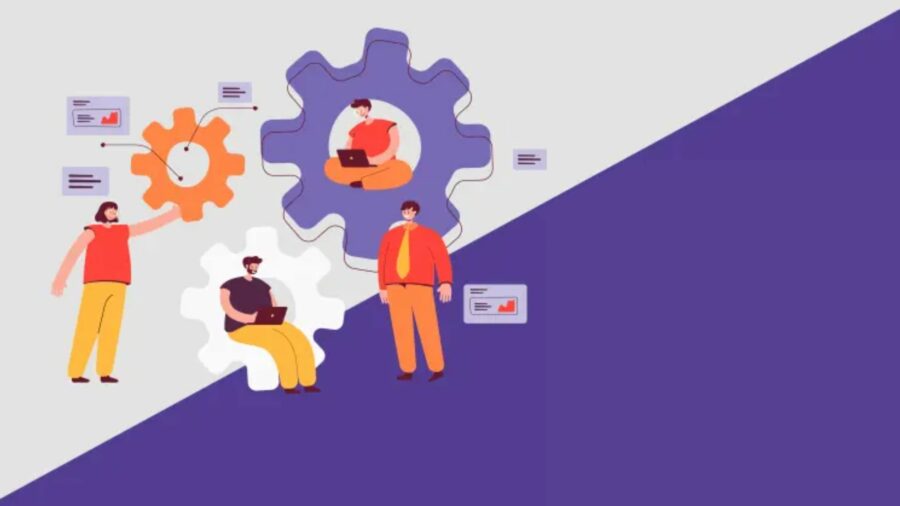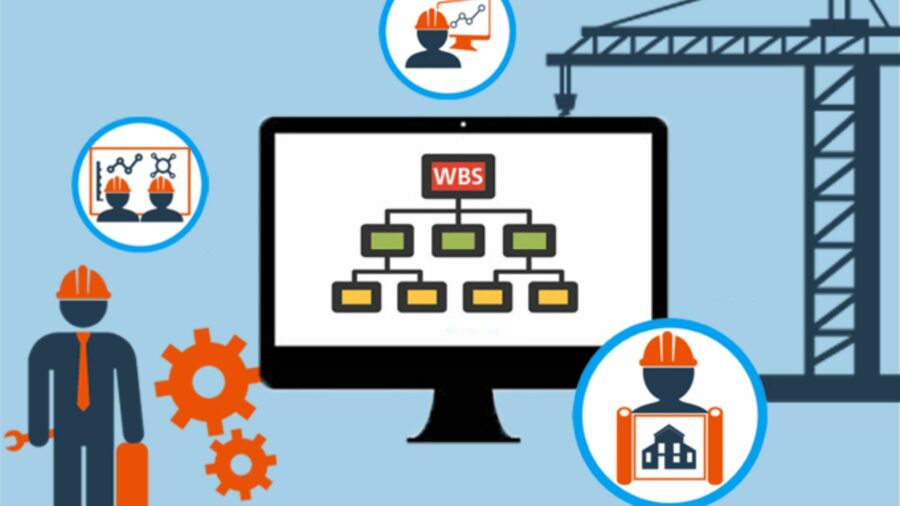Master Work Breakdown Structure: Simplify Project Planning
In the bustling world of project management, it’s the organized minds that often triumph. And what’s a better tool for an organization other than a Work Breakdown Structure (WBS)? As an essential roadmap for any project, a WBS template can be your secret weapon to ensure nothing falls through the cracks.
Understanding Work Breakdown Structure

As we delve deeper into the work breakdown structure, it’s crucial to spotlight its purpose and the key components that make up a WBS template.
The Purpose of a Work Breakdown Structure
At its core, a Work Breakdown Structure serves as a foundational pillar for project management. It creates a clear map that aids in understanding project deliverables, greatly enhancing project planning and execution. When a project domain is segmented into manageable parts using a WBS, it enables effective monitoring and control. Acting as a powerful visualization tool, a WBS charts out the entire project scope, enabling me to track, measure, and report project progression accurately. The end result? A greatly increased capacity to manage project resources, risks, and costs more effectively.
Key Components of a WBS Template
A good WBS template encapsulates several essential components. Firstly, clear deliverable-oriented segments provide a descriptive path towards project completion. An example? Identifying the need for market research in an ecommerce project initiation. That’s a clear deliverable for your project.
Each segment in a WBS carries an allocated timeframe. For example, if the project lifespan is 180 days, you might allocate 20 days to complete the ‘market research’ segment.
Finally, resources are assigned to each segment. In our ecommerce project initiation, specific team members conduct the market research.
This structure, fixated on deliverable, timeframe, and resource allocation, ensures that a WBS template provides clear, tangible, and measurable components for successful project management.
Benefits of Using a Work Breakdown Structure Template

Delving deeper into the advantages of a Work Breakdown Structure (WBS) template, I find two key benefits paramount – clarity in project scope and improved task management.
Clarity in Project Scope
A work breakdown structure template excels in delineating the project scope with a degree of exactness that’s hard to match. It explicates the project into digestible chunks, allowing substantive understanding of each component. It’s like peering into the project through a magnifying glass, identifying each detail with precision.
For example, a construction project, typically beset with intricate and myriad tasks, could be broken down into phases like design, procurement, construction, and testing. Each phase can then be further dissected into specific activities, bringing clarity and enabling realistic scope definition. This strategic dissection helps forestall “scope creep” – a project management term for uncontrolled changes or continuous growth in a project’s scope.
Improved Task Management
As a project manager, managing tasks can sometimes feel akin to juggling fire. There’s a constant flurry of activities requiring my attention – from resource allocation to monitoring work plan. But, a well-structured WBS template serves as a flotation device amidst this turmoil, making task management not only feasible but also efficient.
Consider a software development project. A meticulous WBS divides the project into concrete segments like requirement gathering, design, coding, testing, and deployment. In each segment, tasks are explicitly defined – who is developing a module, how long it’ll take, what resources are needed. With this, you’re essentially putting each task under a microscope, ensuring no aspect is overlooked. As a result, task assignment becomes slick, monitoring work progress turns methodical, and resource allocation becomes a breeze. You create a trail, simplifying the tracking and management of tasks, allowing smoother project maneuverability.
Choosing the Right Work Breakdown Structure Template
In adopting a Work Breakdown Structure (WBS) for successful project management, selecting an appropriate WBS template is paramount. It’s crucial to pick a fit that’ll serve your project’s peculiar requirements and dynamics.
Factors to Consider
There are several elements to consider when deciding on the right WBS template, to ensure an optimal project execution devoid of hurdles.
- Complexity Level: Contemplate the complexity level of your project. For smaller projects, a simple WBS template suffices. However, in approaching large-scale, multi-faceted projects with numerous tasks and subtasks, a complex WBS template provides a more in-depth breakdown.
- Project Lifecycle: Consider the project lifecycle. Projects with short lifecycles might require a straightforward template. Conversely, long-term projects could benefit from a more detailed template allowing for intricate schedule planning.
- Team Size and Composition: The size and composition of your team is another factor worth considering. A template that allows assigning tasks to specific team members makes resource allocation smoother.
Customizing Templates for Your Project
Remember, there’s no one-size-fits-all solution when it comes to WBS templates. Therefore, customizing templates to fit your project’s unique demands is crucial. You may need to modify elements such as tasks, deadlines, and task allocation specifics.
- Modifying Tasks: Depending on the scope of your project, you may need to add more tasks, subtasks, or remove unnecessary ones. For instance, if the project involves developing a software application, tasks like coding, testing, debugging, and deploying might be included.
- Adjusting Deadlines: Deadlines are not always fixed. Depending on the task progression, changes may occur, necessitating deadline adjustments within the WBS template.
- Altering Task Allocation: The team composition and individual skill sets might change during a project’s lifecycle, necessitating alterations in task allocation within the WBS template.
In sum, choosing and customizing a WBS template involves serious considerations focused on alleviating project management worries and promoting successful project execution.
Step-by-Step Guide to Filling Out a WBS Template

First things first, let’s establish the process of populating a Work Breakdown Structure (WBS) template. Below you’ll find the steps I’d suggest to take in order to make the most out of your WBS template.
Defining Project Goals
Step one, define the project’s goals. Being clear about the objectives shines a light on the path to proceed. For instance, consider the goal of building an e-commerce website. Key objectives might include enhancing user experience, boosting site traffic, and increasing business revenue. Each goal helps to shape the tasks and requirements necessary for the project.
Breaking Down Project Deliverables
Next up, break down those project deliverables into digestible pieces. Run a decomposition task to split these deliverables into manageable tasks, providing a clear road map. For example, if one deliverable is to create a user-friendly site design, you could break this down into tasks such as defining user requirements, building wireframes, testing usability, and finalizing design. The granular view aids in tracking project progress and identifying potential roadblocks early.
Assigning Responsibility and Resources
Lastly, let’s talk about the importance of assigning responsibility and resources. Every task, big or small, in the WBS template needs an owner. That’s how tasks get done. Specify team members’ roles and ensure they’re aware of their duties. Additionally, assign necessary resources to each task. This includes any tools, software, or infrastructural elements required to complete the tasks. Take design tasks in our e-commerce project, for instance. You’d assign these to a UI/UX designer and provide them with appropriate design tools.
Common Mistakes to Avoid When Using a WBS Template
Going from the significance of a Work Breakdown Structure (WBS) to its application can indeed pose potential pitfalls. Incompletion, inaccuracies, and misinterpretation, however, become avoidable through awareness of common mistakes made when using a Work Breakdown Structure template.
Underestimating Tasks
One regular yet avoidable erratum made during the employment of a WBS template is the underestimation of tasks. Project managers often tend to underestimate the time, resources, or the complexity of a task. A significant task, when seen as smaller than it indeed is, can lead to over straining of resources, time overshoots, and overall project management issues.
For exemplification, consider a software development task split into design, code, and test tasks. By underestimating the complexity of the ‘code’ task, one might inadvertently allocate inadequate time and resources to it, impacting the project’s timeline and quality.
Paying attention to variables such as similar past tasks, expert advice, and industry standards, one can prevent the pitfalls associated with task underestimation.
Ignoring Dependencies
Another mistake to sidestep when leveraging a Work Breakdown Structure template is ignoring dependencies. Tasks in any project rarely exist in isolation. There are almost always dependencies among tasks that can significantly impact the overall project timeline and resource allocation if overlooked.
The lesson here lies in the ‘test’ task from the earlier software development project example. Suppose this task kicks off without considering its dependencies on the ‘code’ task. In that case, significant delays, resource mismatches, and quality concerns can arise down the line.
Hence, while delineating tasks on a WBS, it’s crucial to factor in dependencies and sequence tasks appropriately. With a keen eye on task dependencies, project managers can successfully avoid this common pitfall. They can streamline their project workflow, ensuring efficient resource utilization and timely project completion.
Tools and Software for Creating Work Breakdown Structures
Transitioning from understanding the essentials of proper Work Breakdown Structure implementation, let’s shift our focus to the digital tools and software that help in creating these efficient structures. Digital platforms offer an excellent solution as they sort, classify, and depict tasks visually, improving organization and efficiency.
Popular Work Breakdown Structure Software Options
Looking into myriad software options out there, several stand out based on performance and user feedback. Programs such as Microsoft Project, Wrike, and Smartsheet populate the top of the list. Now, let’s explore some of their popular features.
- Microsoft Project: As part of Microsoft’s suite of productivity tools, it delivers a robust platform. It excels at task scheduling, budgeting, and allotting resources.
- Wrike: This versatile tool allows the creation of comprehensive Work Breakdown Structure in a highly intuitive and straightforward manner. It features customizable dashboards, progress tracking, and collaboration tools.
- Smartsheet: Smartsheet offers a range of functionalities, from task chaining to timeline creation. Integration with popular tools like Slack, Zapier, and Google Workspace make it a versatile option for diverse project needs.
Pros and Cons of Digital vs. Manual WBS Creating
Contrasting digital and manual methods can help identify which might work best for your project needs.
Digital WBS creation presents benefits such as user-friendly interfaces, easy task updates, real-time collaboration, and automatic report generation. For example, rapid task modifications allow for team adaptability, and real-time collaboration fosters better team communication. However, digital methods also face drawbacks such as a reliance on stable internet connections, potential data security vulnerabilities, and sometimes steep learning curves.
On the other hand, manual methods, like using pen and paper or whiteboards, present advantages in terms of quick brainstorming, easy visualization, and minimal technical issues. These methods can come in handy for initial stages of project scoping or small-scale projects. Yet, they lack advanced features like real-time collaboration, automatic resource allocation, and progress tracking. For instance, updating task dependencies manually can be time-consuming and error-prone.
Adopting these tools and software can potentially transform the complexity of creating a WBS into a more manageable process, reaffirming our earlier discussion on the importance of proper task organization and monitoring.
Real-Life Examples of Successful Work Breakdown Structures

Building on the foundation of understanding we’ve established about Work Breakdown Structures (WBS), let’s dive into concrete examples from diverse industries. By dissecting these real-world case studies, we’ll see the power of WBS in action, offering practical insights for your projects.
Case Study: Construction Project
Take a construction project of a multi-storey residential building. I generated a WBS that revolved around the major phases of construction, from project initiation to final touch-ups. The first level included divisions like “Foundation and Structure,” “Exterior Finishing,” “Interior Finishing,” and “Landscaping.”
Diving deeper, the “Foundation and Structure” subdivided into tasks such as excavation, pouring concrete, structural framing, and roofing. Each of these tasks had individual activities assigned like site preparation for excavation and acquiring required concrete mix for foundation pouring.
Through this specific setup, the construction team benefitted from a clear view of tasks, their hierarchy, dependencies, and resource allocations. This structure eliminated confusion, reduced overlapping duties and significantly improved project management. It’s an excellent real-world example that showcases the potency of a well-crafted WBS in enhancing organization and efficiency.
Case Study: IT System Implementation
In a different industry, I’ll walk you through an IT system implementation project. The primary components included in the WBS encompassed task clusters like “System Analysis,” “Design,” “Coding,” “Testing,” and “Implementation.”
Under “System Analysis,” there were detailed tasks like gathering system requirements and understanding user needs. “Design” broke down into activities like creating a database design and designing the user interface. Each task tier brought clarity and made responsibilities evident to all involved parties.
Having such distinctions in place paved the way for a smooth transition between the stages—system analysts knew what was required, developers knew what part of the system to code, and testers knew what functionalities required checking. The culmination of these tasks resulted in successful implementation of the system.
These examples vividly illustrate the versatility and effectiveness of Work Breakdown Structures in different sectors. When applied properly, WBS serves as an invaluable tool for project management, capable of propelling any project towards success.
Conclusion
Having delved into the world of Work Breakdown Structure (WBS) templates, it’s clear that they’re invaluable in project management. They bring clarity and efficiency to any project, whether it’s a construction site or an IT system implementation. By defining tasks, allocating resources, and monitoring progress, they streamline the management process. Tools like Microsoft Project, Wrike, and Smartsheet make it even easier to create a WBS, avoiding common pitfalls. So, it’s time to embrace the WBS template. It’s not just a tool, but a game-changer for your projects, promising organization and success in your future endeavors.
Frequently Asked Questions
Q1. What is a Work Breakdown Structure (WBS)?
A Work Breakdown Structure (WBS) is a project management tool that breaks down the total scope of a project into manageable chunks. These chunks or tasks are arranged hierarchically, making project organization and progress monitoring more efficient.
Q2. What is the significance of a WBS in project management?
A WBS is crucial in project management because it effectively organizes tasks, simplifies resource allocation, and facilitates progress tracking. It provides a visual representation of the project to clearly indicate deliverables and requirements, enhancing efficiency and productivity.
Q3. What are the common mistakes to avoid while creating a WBS?
Common mistakes in creating a WBS include being overly detailed or vague, not involving the entire team in its creation, ignoring dependencies between tasks, and overlooking cost and time estimates. Knowing and handling these concerns ensures the effective use of the tool.
Q4. Which tools can be used for creating a WBS?
The article mentions tools like Microsoft Project, Wrike, and Smartsheet that can be used to create a WBS. These tools assist in defining tasks, aligning resources, and tracking progress, thus enhancing project management.
Q5. Are there actual examples of successful WBS implementations?
Yes, the article discusses real-life examples of successful WBS implementations in construction projects and IT system implementation. They highlight that a well-defined WBS can enhance organization, efficiency, and clarity across varying industries.

Leave a Reply